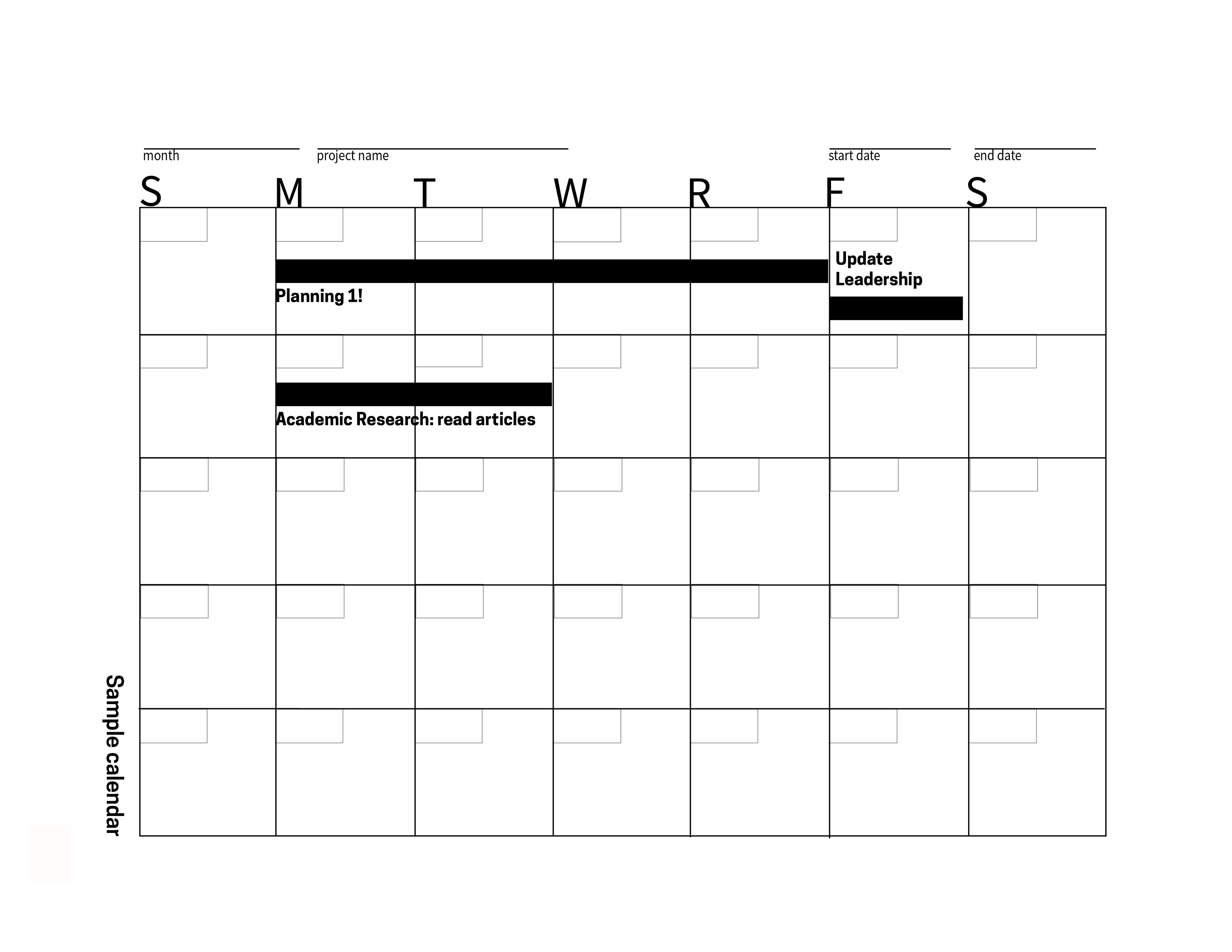Discovery Operations Guide
High-level Timeline
Use a messy, easily updated calendar for planning.
Block days or weeks out in general, then go back and add details as schedules start to come together. The Logistics Coordinator should own this calendar while the project is in-flight, but remember: change your calendar schedule before you ask the participant to change their schedule.
Deadlines can also shift. If there are interesting research opportunities to be had, communicate them to your Leadership and try to get a project extension. Living and dying by arbitrary deadlines will not deliver best possible final product.
Build in time to get through it but don’t let the time limit you. A high-level timeline is necessary to drive recruitment and keep leadership informed. Use the calendar on the facing page to outline the weeks you want to spend recruiting, the weeks you want to spend traveling to and performing interviews and observations, and the weeks you’ll spend in synthesis. Budget in time to make and present to leadership to keep them informed on your project. Keep your timeline as tight as possible.
Assumedly, you will use a digital calendar to track your schedule, but it’s a good starting point to jot a messy, loose one down by hand. A great place to start is with a white board calendar posted in the office. Changes can be made quickly, but teammates won’t be overwhelmed by constant digital updates before those updates are really necessary.
An example of this high-level calendar type is provided. Do not try to enter all the details of every day at this point, even in a digital version; just rough out the activities that should happen in the course of a week, and don’t get bogged down in daily details. Print and use the calendar template on the following pages if it is useful to you.
